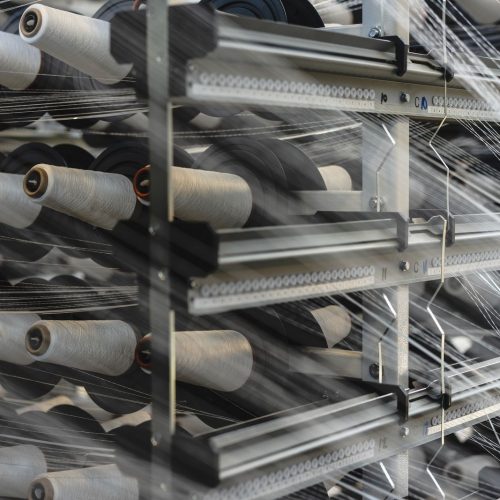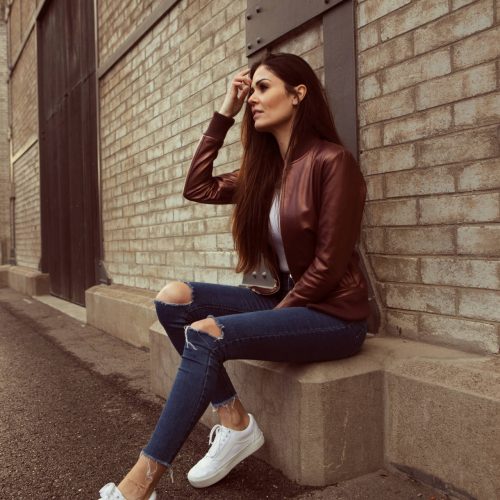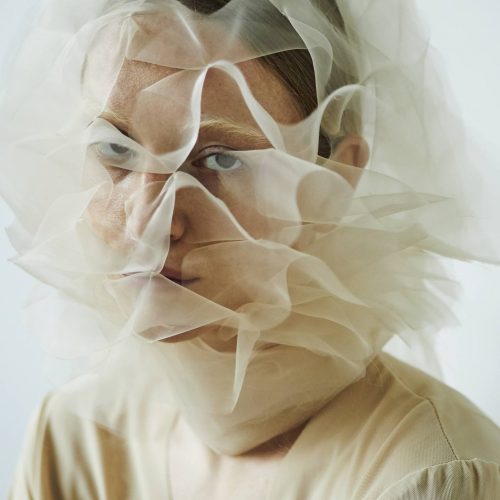Interview with Igor Dieryck | Triple Winner at 38th Hyères Festival
Fresh, playful, and impeccable. Belgian designer Igor Dieryck's latest collection captured everyone's attention at the 38th Hyères International Festival of Fashion, Photography, and Accessories. His collection swept three of the five fashion prizes: the Grand Prix du Jury Première Vision, the Prix 19M Métiers d'art, and the Prix du Public. We had the opportunity to interview him just moments before he was announced as the festival's top winner.
To receive the Luxiders Newsletter, sign up here.
"Trousers with a fly that, when unzipped, reveal the word 'Welcome,' caps adorned with toothbrushes, shirts featuring cufflinks inscribed with 'Sir' – Igor Dieryck's collection whisks us away to the everyday life of a luxury hotel in a humorous and articulate manner. Straddling the realms of formality and concept, his creations, replete with vibrant colors and a bold aesthetic, evoke a retro ambiance that offers a captivating visual experience. The meticulous interior of each piece exudes perfection and a deep appreciation for details and masterful tailoring.
IGOR DIERYCK, POLITICAL AND ANALYTICAL
How are you feeling today?
I'm feeling very, very excited. It's really nice to be able to share information about my collection with so many great professionals and to hear their advice and their opinion on my work. Being selected by Hyères Festival is amazing.
Who came to visit you here?
First of all, we had the great jury, Charles de Villemorin, Sophie Fontanel –who has a big history in fashion and a very important opinion in this world–, and very iconic French people very important in fashion. Also a lot of agents, of course, and a lot of journalists. It's really nice also to be able to talk with them about my work because I hear some feedback from some people and it's really positive and really great for me.
"I always incorporate something quite surrealistic, almost akin to Belgian humor, a playful joke, into my collections. However, if you delve deeper, you'll find a more profound meaning behind it."
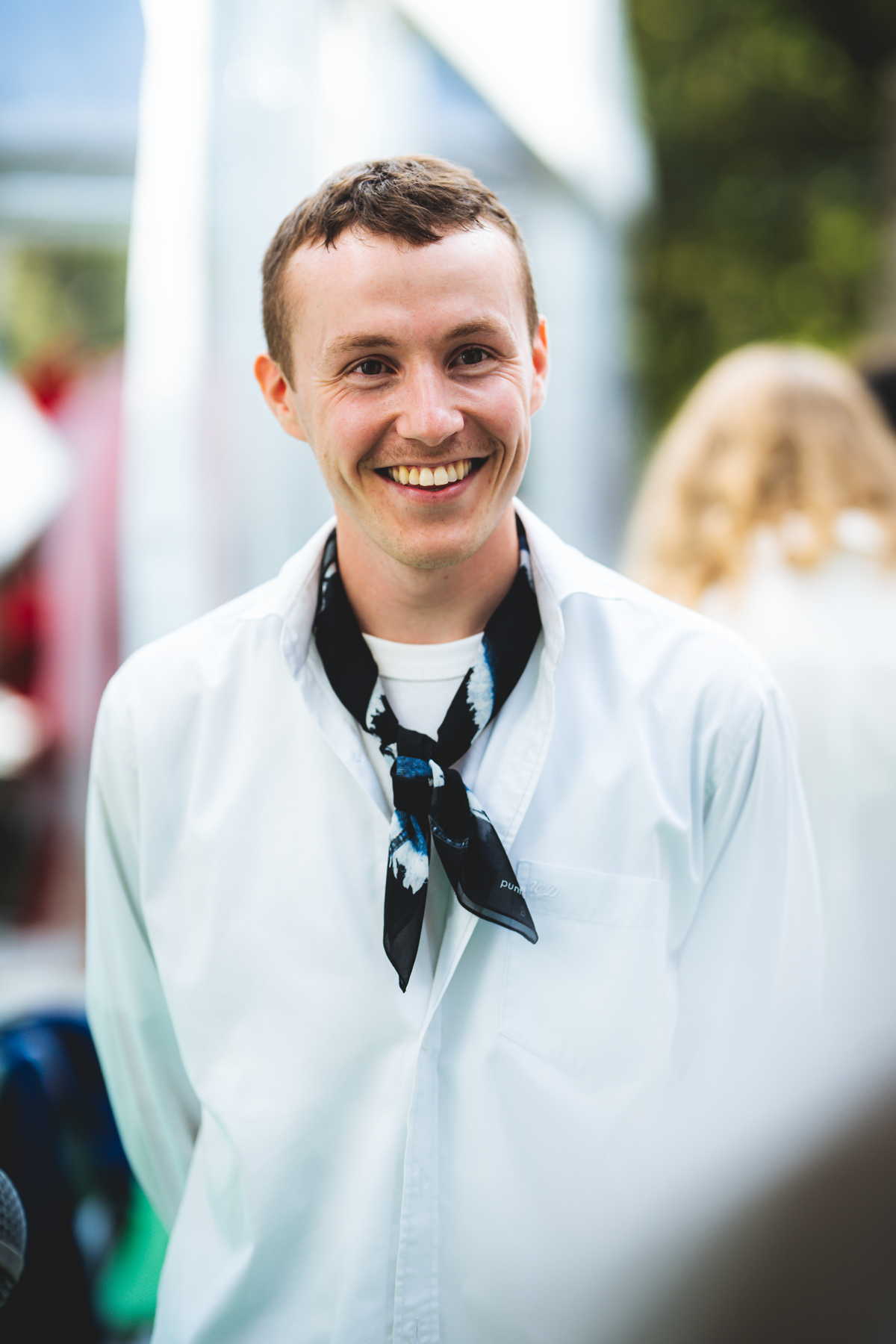
© J.Van Belle - WBI
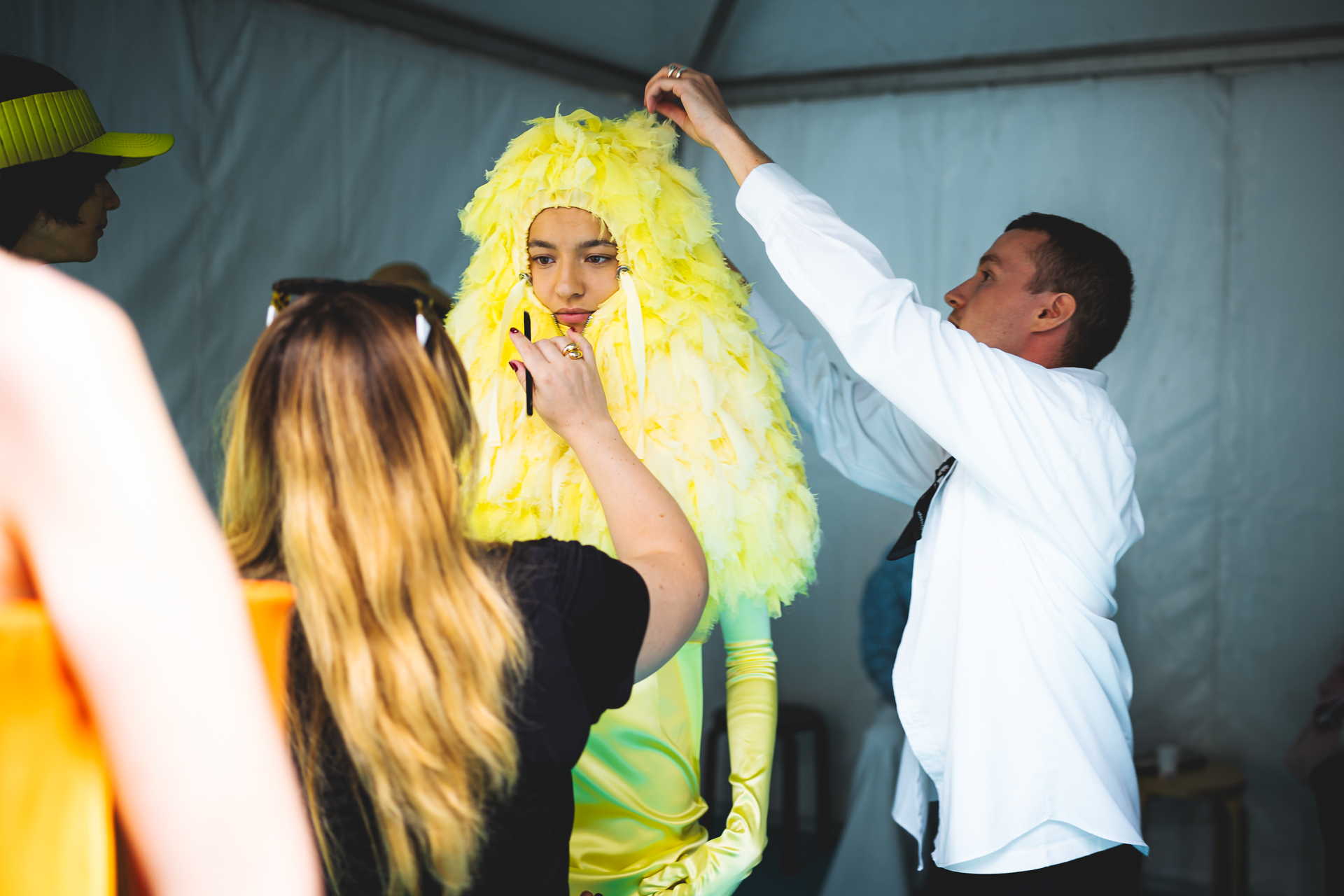
© J.Van Belle - WBI
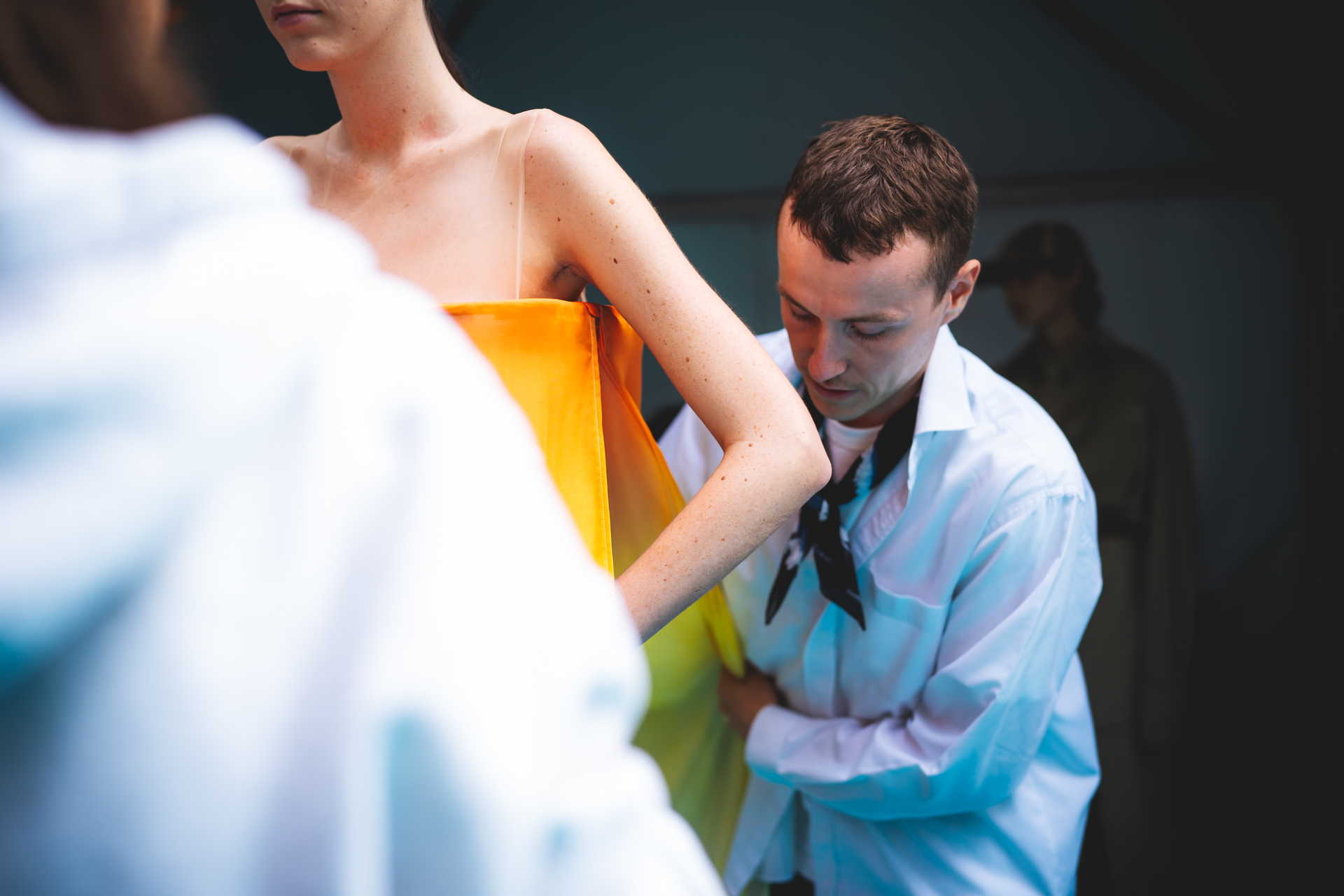
© J.Van Belle - WBI
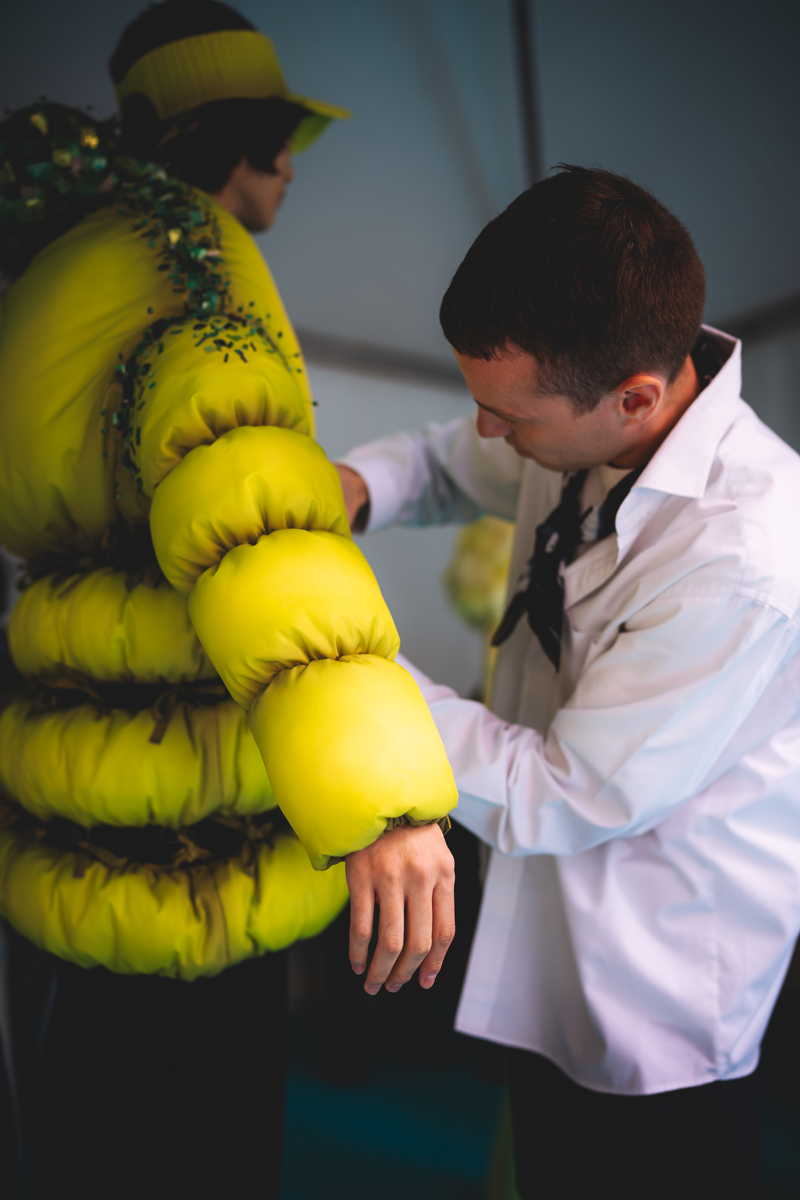
© J. Van Belle - WBI
Let's speak about the collection. As you know, our magazine is all about sustainable culture. We would like that you explain a little bit about the sustainable side of your collection.
The most of the fabrics are from Belgian fabricants. I also used deadstocks from Belgium designers. It was really important for me to reuse those fabrics that were going to be thrown away to make really, really elegant pieces. For this look more in particular, which is the sustainable piece that we're presenting for the Mercedes-Benz Prize, I worked in different ways. The jacket is made out of rest of leathers from their cars’ seats and from leather scraps I found. I cut them in tiny stripes and then all was crocheted. This part is actually made from linen, from a Belgian company called Libeco. They supported me, my collection. They helped me to find the right fabric to be able to play around with tailoring, even though using a sustainable fabric. The pants are actually made from deadstocks from a big company. When big companies produce denim, they always have these few meters at the end of the roll that they're not using, and it's actually good fabric, but for some production reasons, they don't use it. So now I asked to be able to use this fabric from a brand that I used to work for before, and they gave me this fabric. We were able to produce this denim for the collection. It's actually fabric that was meant to be thrown away that we reused for this look.
It's very difficult to make such a big jeans from stock, isn't it?
Yeah, it's a really big challenge. But I asked, of course, the measurements of the fabric I could have in the prior, and then I based on it my design, because when you work in a sustainable way, I think there are a lot of parameters that you have to think of and a lot of challenges, but I think this makes it also interesting. And I think as we are all here in the room, very young and very creative, it's also our job to find the new solutions to work in a sustainable way.
Tell us about your love for tailoring. You mix tailored-references garments with a more experimental construction in your patterns...
For me, it was really important to have a lot of tailoring in the collection. I'm really passionate about tailoring myself, and also because I was working around the idea of the uniform, it was crucial to have that as something truly iconic in my collection. So everything was significant to me; it was essential that everything was meticulously crafted, both on the outside and inside. I used a lot of linings and really strived to create pieces that were well-finished because I believe that's the essence of my collection. I discuss the concept of a uniform and how one must look highly presentable. So, it was a key aspect for me that the garments are impeccably finished.
What about your silhouettes? What's new here?
For the silhouettes, I really play around with the idea of the lobby boy, so the bellboy, I played around with the concept of the lobby boy, specifically the bellboy, and I aimed to elongate the legs as much as possible while shortening the upper body, so it creates this weirdish silhouette where the legs look extremely long. This was the focal point, and as a result, all the jackets and upper garments appeared notably shorter. By doing that, I create another dynamic. I think when you saw yesterday the models walk on the runway, it gives a lot of power to their walk to have these extremely long legs and very tiny waist.
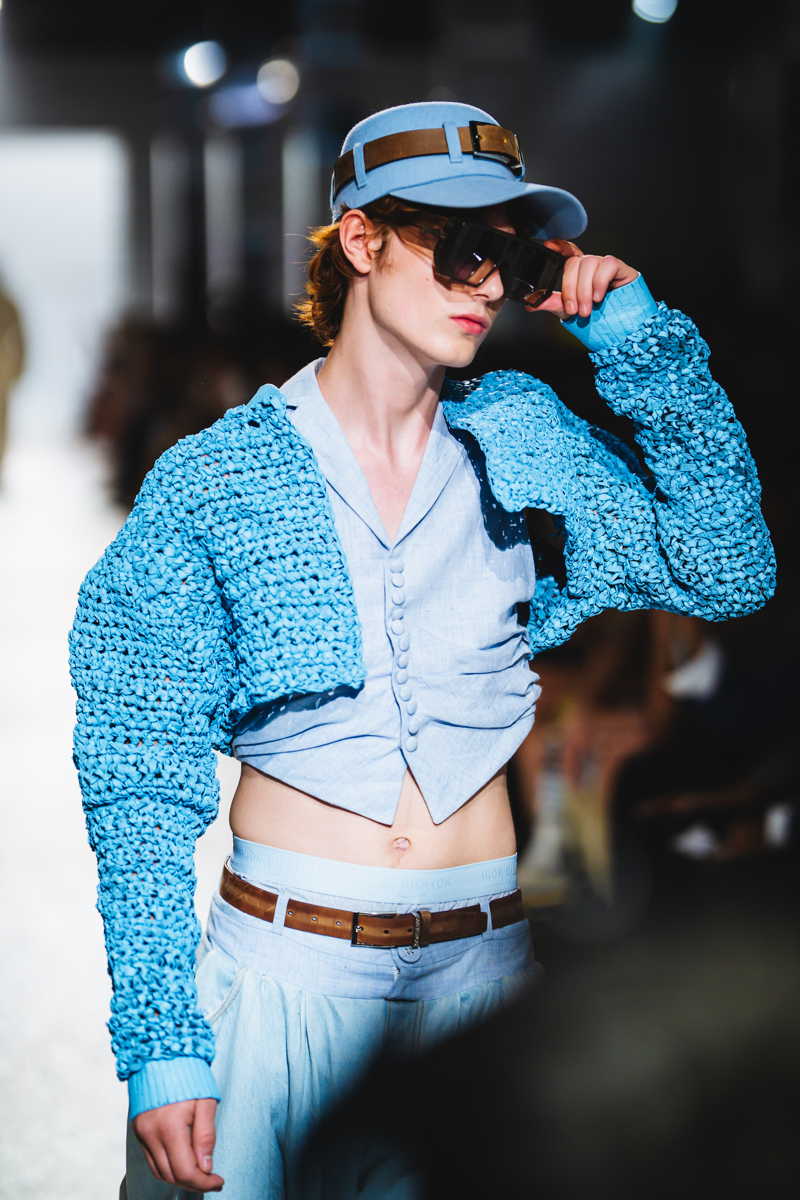
Igor Dieryck © J. Van Belle - WBI
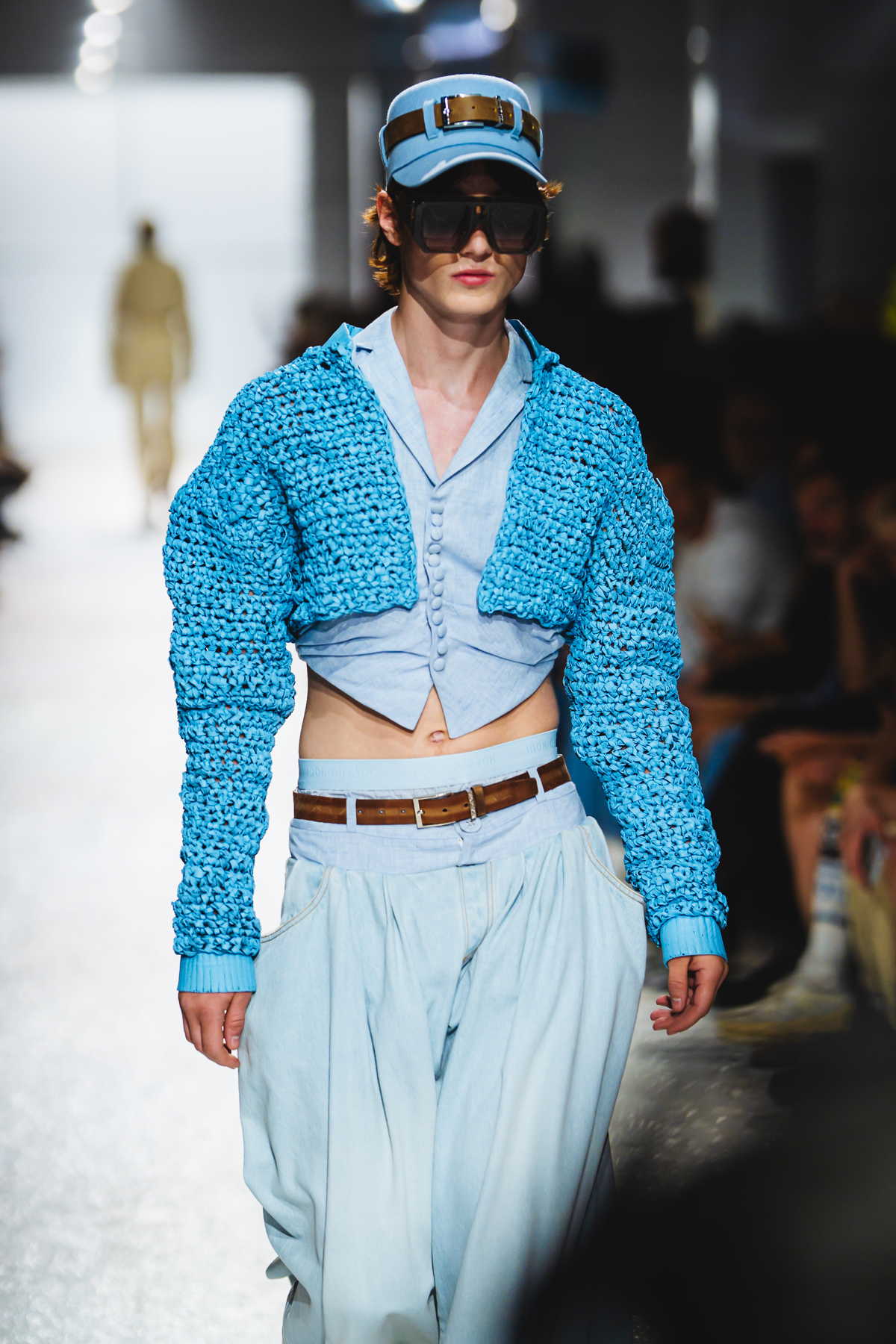
© J. Van Belle - WBI
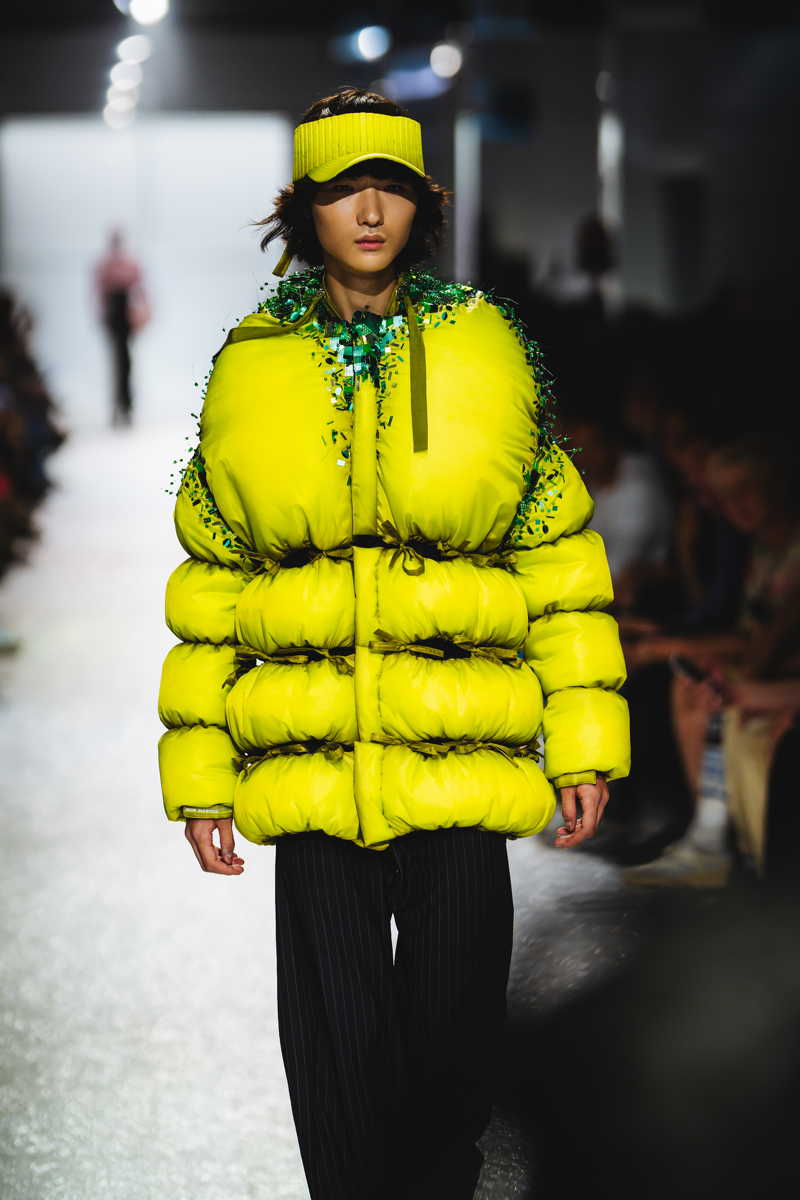
© J. Van Belle - WBI
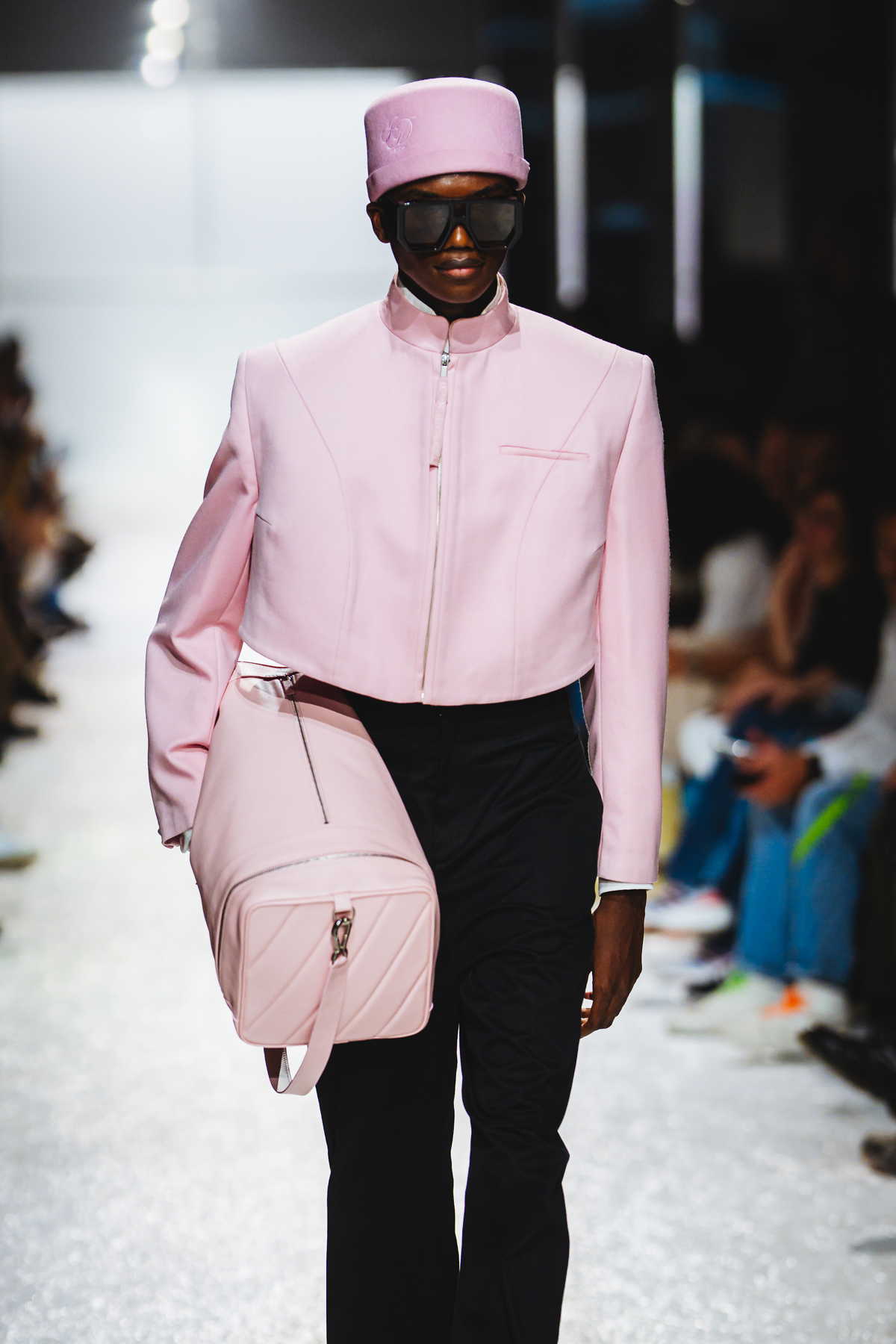
© J. Van Belle - WBI

© J. Van Belle - WBI

© J. Van Belle - WBI
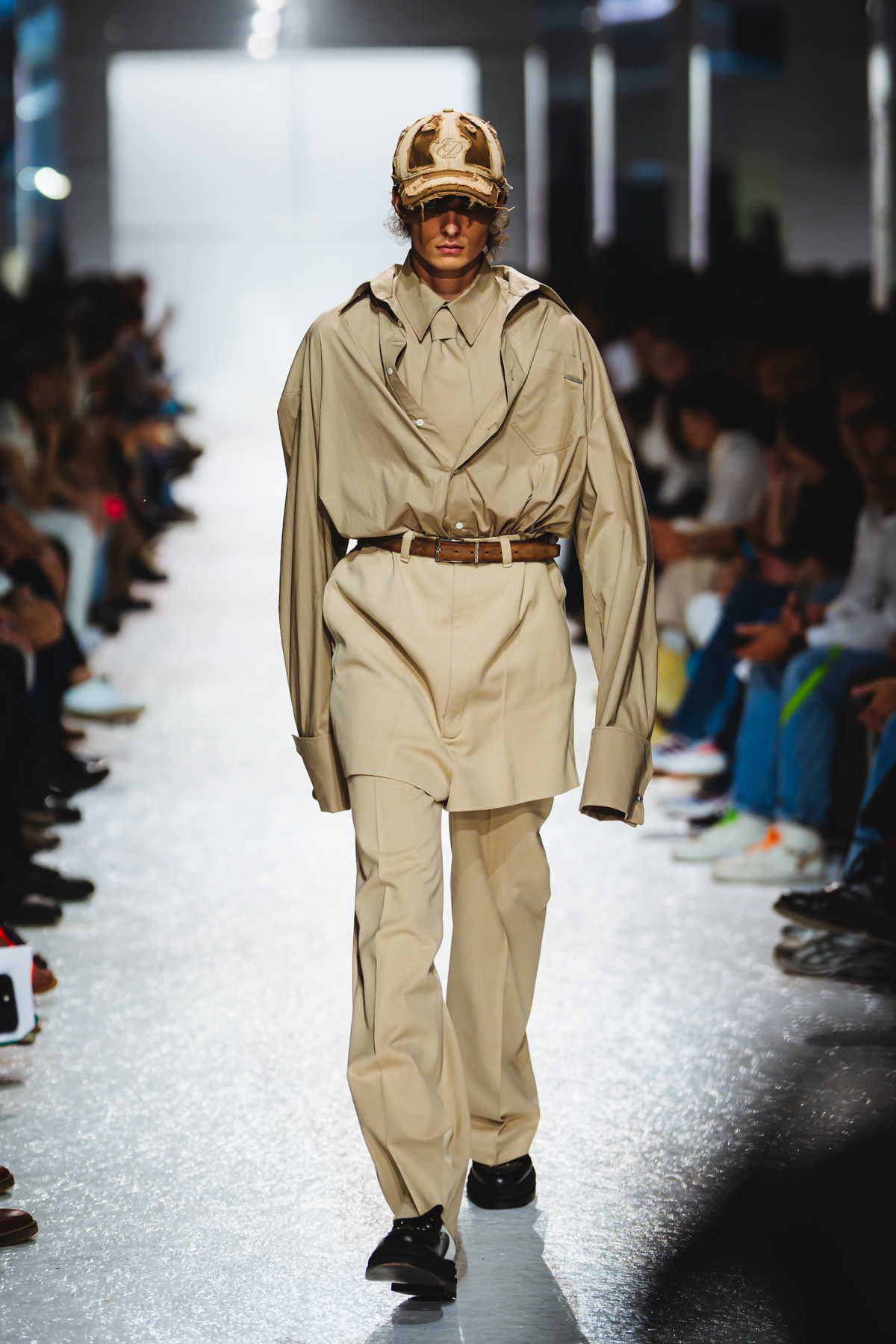
© J. Van Belle - WBI

© J. Van Belle - WBI
What can you tell us about the "duster" style. How was your collaboration with Chanel?
I actually came up with the idea. It was essential to me that the concept remained consistent with the rest of my collection because I had previously worked with bell jackets. For the platter dress, I collaborated with Le Marier. I aimed to evoke something that appeared feathered with a house known for its feather work. However, it was crucial that the dress was actually made of fabric to add an extra layer of meaning and playfulness. I reached out to them, and we had extensive discussions on the best way to bring this idea to life. Of course, I didn't want it to look exactly like feathers. I'm aware that you can create very realistic feather effects, but that wasn't the point. It was more about the idea of evocation. When you hear the story, you realize it resembles a duster, but I didn't want it to look like a genuine duster on the catwalk.
Our collaboration with them was quite fruitful because we collectively explored the best options. Working with a house renowned for couture and dealing with very expensive and delicate fabrics was also a fascinating challenge, and I found it to be a really interesting experience.
Did you fringe it yourself?
Yes, Chanel fringed this fabric for me, but then, after, I reworked it. It was something that I worked on in my own work before, so there was a real connection between my own work and their craftsmanship.
So, can we say it was a win-win work? Like you were learning, but they were learning also from you in a way…Why not?
I believe they were quite surprised by the piece I was creating. When they first saw the patterns, they seemed a bit puzzled, so they proceeded with the embroidery without a clear understanding of what the final piece would look like. However, now that they have seen the picture, I received a message this morning that they were really happy, so I'm happy if they're happy. I hope it's a learn-learn situation, but I learned a lot from them, and it was a great pleasure to work with them.
Did you also try to work in a similar way with Belgian companies?
Yes. This, for example, is made by Falke. It's a German company. It was really important for me to stay as close as possible from home. I would say, I work with a lot of Belgian companies. Also for the glasses, I worked with Komono, or for the hats, I worked with Labels & Things.
Labels & Things?
Labels and Things, yeah. I didn't know there were in Antwerp. They work with a lot of big brands, like Nina Ricci, and a lot of bigger brands. It was really nice also to be able to collaborate with a lot of Belgian designers. Fashion in Belgium is struggling in the last years. A lot of companies are being bought by bigger groups. It's really interesting to be able to keep doing things in Belgium.
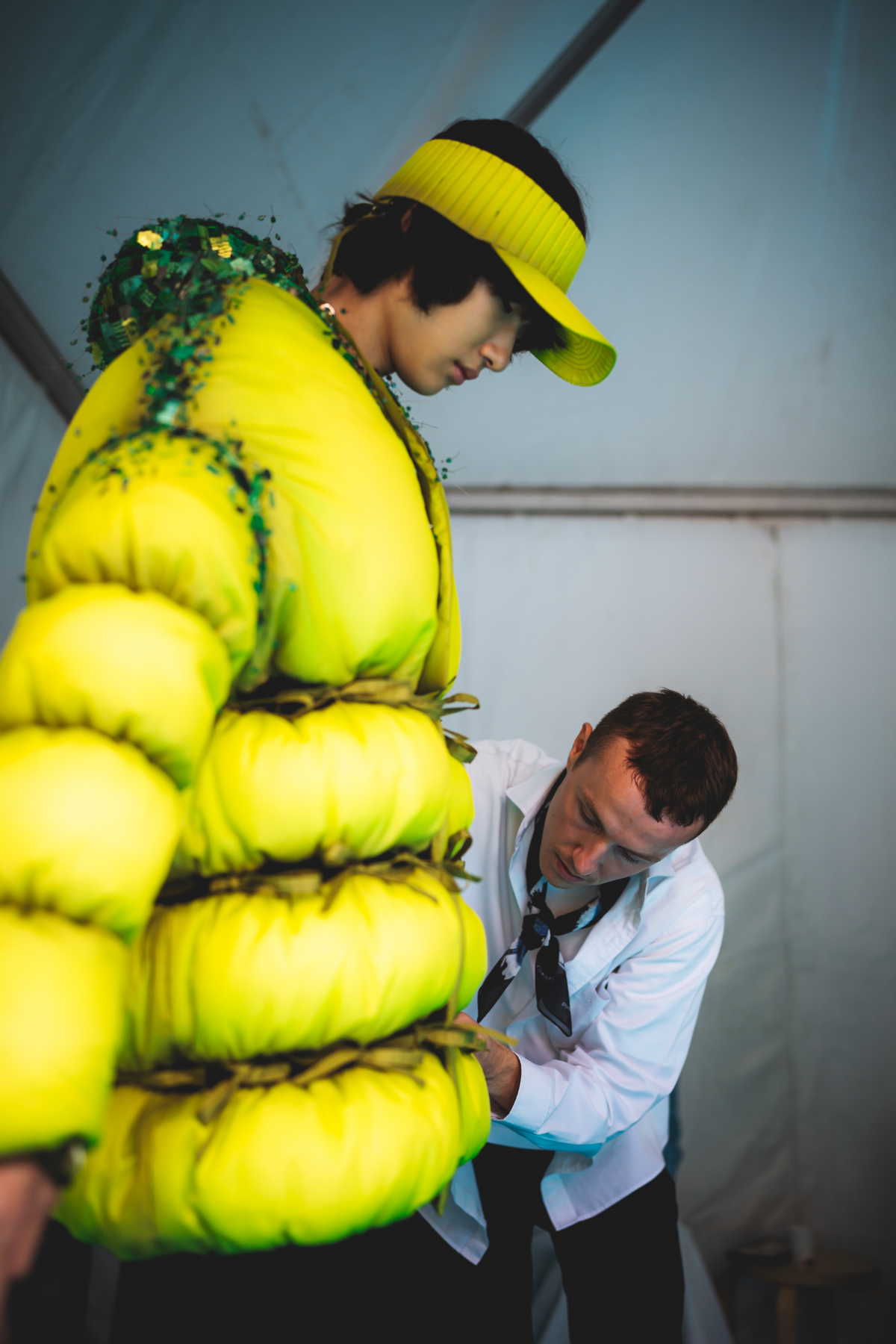

The feathered jacket by Igor Dieryck © J. Van Belle - WBI
We would like to talk about this garment. What is inside?
This is one of the most iconic streetwear pieces in my collection. The feathered jacket is something that everyone wears nowadays. It was important for me to elevate this typical streetwear item into something akin to couture. I collaborated with Labels & Things to create this intricate embroidery. I wanted to demonstrate that you can achieve a high level of elegance even when wearing a flashy feathered jacket. On the runway, it looked absolutely marvelous.
And what about your collaboration with the glasses? I really love them.
Thank you so much. I love them too.
I want them…
The glasses draw their inspiration from a champagne glass, evident when you examine their side profile, which mimics the shape of a champagne glass. Just like the rest of my collection, I always inject an element of surrealism, almost a sort of Belgian humor, a playful twist in my designs. However, there's always a deeper meaning to it. When someone wears these sunglasses and engages in a conversation with someone directly in front of them, this clever construction actually creates a certain distance between the wearer and the person on the opposite side of the glasses. So, while I wanted to maintain a sense of playfulness and fun, it was crucial for me that it carried a deeper significance. Komono was a great supporter of my collection, and together we created this piece. It was a truly enjoyable collaboration.
The material is sustainable?
Yeah, it's recycled acetate.
Well done, Igor! We're confident you'll have plenty of opportunities to share humorous stories in the future. We'll be there to savor them. Thanks for your time!
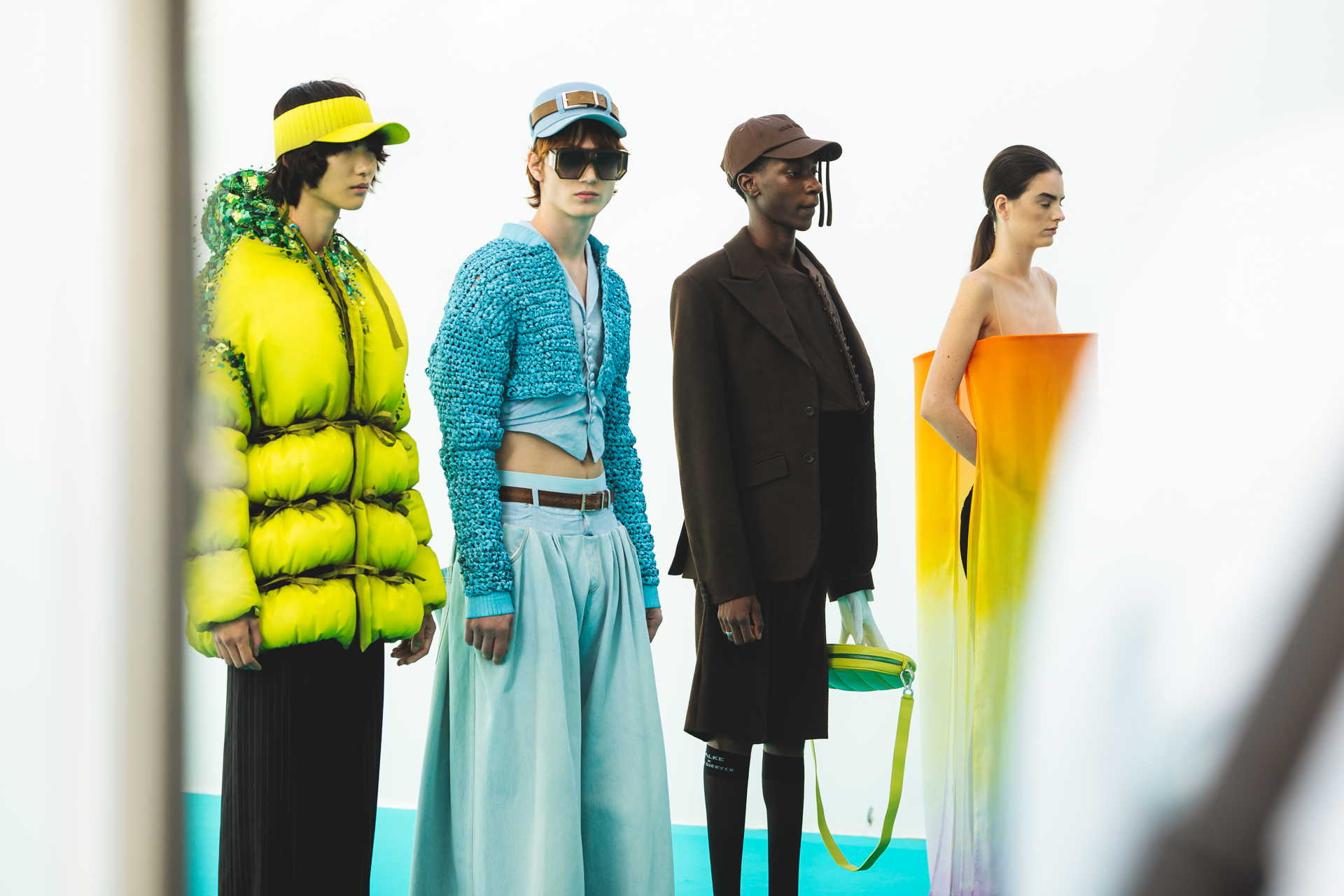
© J. Van Belle - WBI
The Grand Prix of the jury Première Vision consists of a grant of 20,000 euros offered by Première Vision and a high level of visibility during a Première Vision Paris event; a collaborative project with the Métiers d’art, worth up to 20,000 euros; the conception of a capsule collection that embodies the Galeries Lafayette’s values of inclusivity and diversity in the fashion world; an allocation of fabrics and dedicated support from Alliance for European FlaxLinen & Hemp to create one or several silhouettes to help the winner of the Grand Prix du Jury Première Vision in the development of the marketing of his future collection; an invitation from ICICLE to create a capsule collection; and 1-year mentorship to advise and counsel for career pathing by Sterling International.
The Prix 19M Métiers d'art rewards the best collaboration with ten of the Houses belonging to the Métiers d’art: Ateliers de Verneuil-en-Halatte, Causse, Desrues, Goossens, Lemarié, Lesage, Lognon, Maison Michel, Montex and Paloma. The winner will receive a grant of 20,000 euros to make a new creative project that will be unveiled next year, at the 39th edition of the festival.
+ Words:
Belvis Soler
Luxiders Magazine

